Sorry, we don't have any places yet
Explore more places related to this search:
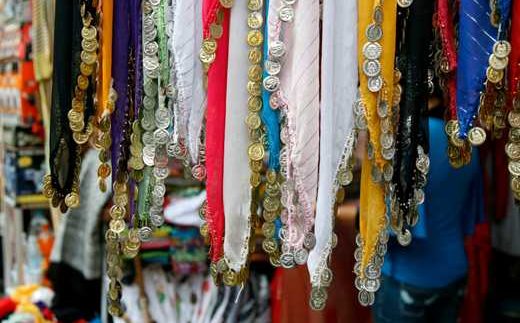
Removed from Unnamed collection
Khan El Khalili 
There’s absolutely nothing in Cairo like exploring the enormous shopping labyrinth of Khan El Khalili, the city’s largest souk that has preserved much of its original structure since its days as a famous medieval bazaar. Tourists and Egyptians alike arrive at this densely populated maze of streets and alleyways to find all sorts of gifts, including Egyptian antiques, fine handmade crafts, shishas and spices. https://www.cairo360.com/article/sights-travel/cairo-guide-shopping-in-khan-el-khalili/
Map
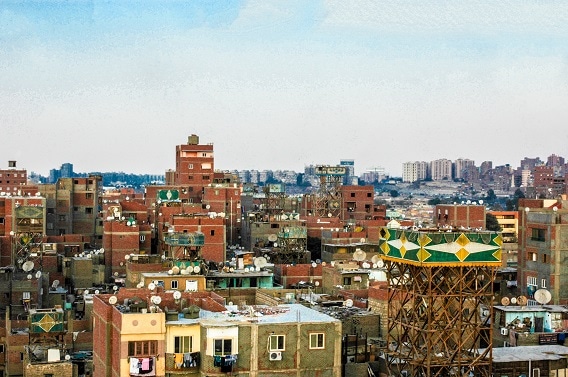
Removed from Unnamed collection
City of the Dead 
Even Cairo, a bustling capital city of 21 million or so people, has its secrets and obscurities, not least the City of the Dead. Located below Mokattam Hills in the south east of the city, the area is essentially a necropolis; but over the centuries it has evolved into a living, breathing organism of its own that has managed to reach a certain degree of self-sufficiency. Though considered a slum – and it’d be hard to argue that – it also stands as one monument to Cairo’s colourful history.
Running along the city from north to south, the strip is around 6.4km long.
The City of the Dead dates back to the Muslim conquest of Egypt in 642 AD, when Amr Ibn Al ‘as established a family graveyard at the foot of Mokattam. Many of the residents are said to have moved there to be close to deceased relatives.
It has been something of a touristic site for centuries, with the likes of Moroccan scholar, Ibn Batuta –widely considered to be one of the greatest travelers in history – having visited and written about it. https://www.cairo360.com/article/sights-travel/in-photos-the-eerie-beauty-of-the-city-of-the-dead/
Map
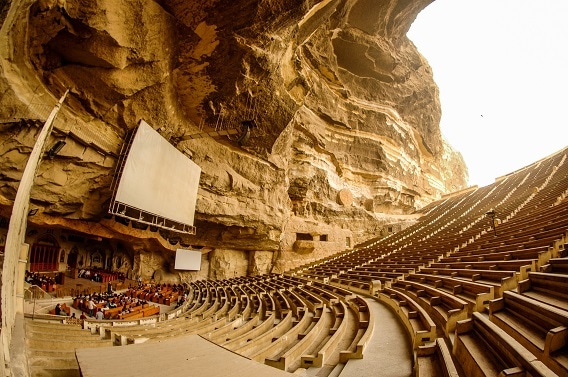
Removed from Unnamed collection
St.Samaan Church 
It’s become something of a cliché – a sad one at that – but we’ve said it before and we’ll say it again: there’s much more to Egypt than Ancient Egyptian antiquities. Granted, the Zabaleen area of Mokattam receives its fare share of attention for its sheer uniqueness, but one particular feature often goes unnoticed – St. Samaan Church.
The church is named after Samaan Al Kharaz (Simon the Ranner), who, according to the tradition, performed a miracle in moving the mountain to help Abraam – Pope of the Egyptian Church – prove his faith to a Jewish grand vizier. The areas of the mountain around the church also feature a number of carvings. These carvings were done by a Polish artist in 1995 and was commissioned by the church’s founder, Samaan Ibrahim. In addition to the church itself – which can seat up to 1000 people – the monastery also include a library, children’s playground and a cafeteria. https://www.cairo360.com/article/sights-travel/in-photos-the-stunning-serenity-of-st-samaan-church/
Map
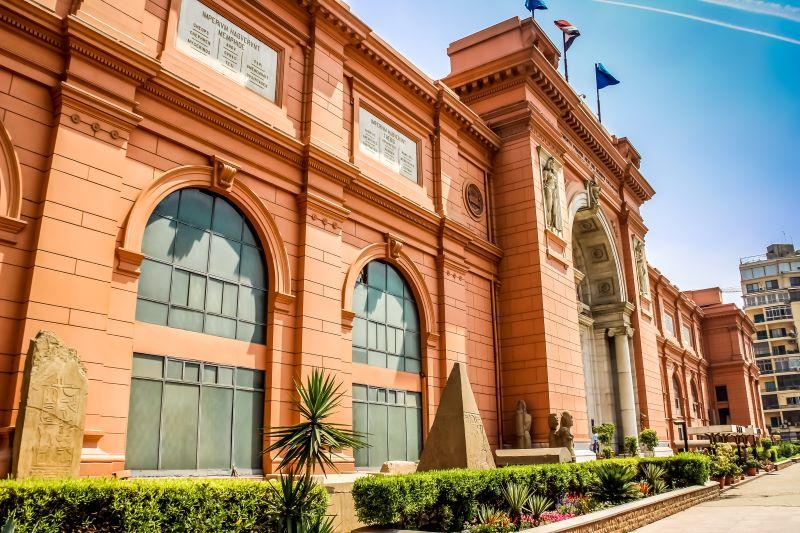
Removed from Unnamed collection
The Egyptian Museum 
It may not be the oldest museum exhibiting Egyptian antiquities, but the Egyptian Museum holds the most: over 150,000 pieces are on display, with an incredible 30,000 more stocked away.
After an initial ID check at the Egyptian Museum’s entrance just off of Tahrir Square, there is a bag check at the main gates. Once you have acquired your ticket, there is yet another queue for ticket checks, before you enter through the museum doors, upon which you are subjected to another electronic sensor. Despite the museum’s website claims, you are not allowed to bring a camera in under any circumstances. Upon entering the museum, you will feel like a rogue archaeologist that has stumbled on a tomb of treasures.
You are immediately confronted by three routes. Taking a left will start you off on the chronological route through Egyptian history. Once you’ve figured out the slightly confusing numbering, room fourteen is a secret little pleasure and a must-see. Guarded by statues on either side of its entrance, the room is built like a temple. Steles are used to cover the walls, as a huge, inscribed pillar seems to hold up the ceiling of the museum itself. https://www.cairo360.com/article/arts-culture/the-egyptian-museum-an-insiders-guide/
Map
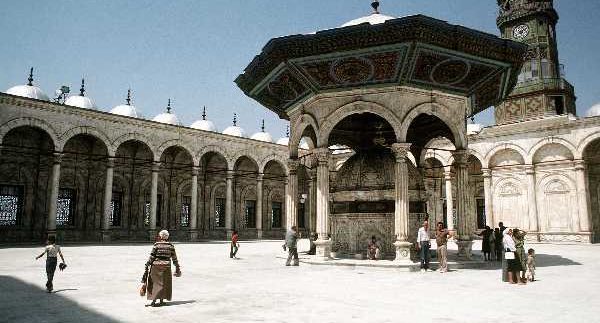
Removed from Unnamed collection
Cairo Citadel 
As familiar and known a sight as that of the Giza Pyramids, the medieval Citadel sits conspicuously over the haze of Cairo’s minarets, with the Mohammed Ali mosque glimmering like a beacon to all travellers, visitors and Cairenes alike. The gentle breeze from the hilltop location brings to mind a legend about Saladin, the builder of this medieval fortress in the 12th century. In the search to build a proper fortress against the Crusaders, he hung pieces of meat throughout Cairo and swore that wherever the meat stayed fresh the longest would become the location of his fortress. All the meat he placed was ruined in a day except for the meat hung on a hilltop near Cairo, where the fresh breeze kept the meat fresh for days. Who knows? Maybe he built the Citadel on a hill because in his native mountainous Syria most fortresses were built in strategic high locations, or maybe fresh meat was a big deal to Saladin.
The Citadel is a popular destination for tour groups and local school field trips. While most tourists are taken to the Hagia Sophia inspired Mohammed Ali mosque, they might miss the great sites that lie nearby, marking massacres, harem palaces, spiral wells, royal court drama, crime, and ancient Egyptian ruins. https://www.cairo360.com/article/sights-travel/the-citadel-cairos-ancient-fortress/
Map
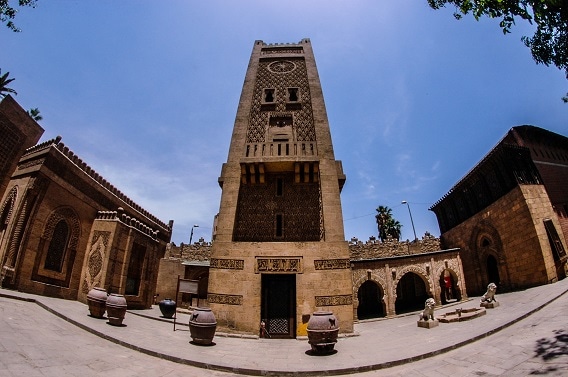
Removed from Unnamed collection
The Mosque of Muhammad Ali 
Located on Rhoda Island in Cairo’s Manial district, the Prince Mohammed Ali Palace is unlike any historical site in the capital. Built by the uncle of King Farouk, Prince Mohammed Ali Tewfik, between 1899 and 1929, what makes the palace stand out – even next to anything you’ll find in Old Cairo, which sits a stone’s throw away across a branch of the Nile – is its unique fusion of Ottoman, Persian, art nouveau and late baroque inspirations.
Divided into five distinctly conceived and designed buildings which sit in the middle of a stunning Persian garden, the palace was as much a home to Mohammed Ali’s grand collection of art, furniture, clothing and medieval manuscripts as it was for him. Lending itself to a museum blueprint, the palace was handed over to the Supreme Council of Antiquities – a former branch of the Ministry of Culture – in 1955 and quickly became one of the most striking reminders of the Mohammed Ali dynasty. The palace is also home to one of the world’s most lavish collections of Oriental carpets and rugs, while the walls silk embroideries and portraits of royals. https://www.cairo360.com/article/sights-travel/in-photos-the-majestic-grandeur-of-mohammed-ali-palace/
Map

Removed from Unnamed collection
Giza Pyramids Tour 
Giza Pyramids Tour | Tours-to-egypt.com Want to know about the Giza pyramids tour? Tours-to-egypt.com will help you to choose the best trip plan to fully make an extraordinary tour. For more info visit our website today.Contact Us-Nile Cruisershesham@tours-to-egypt.comAs Saha. Abdeen - CairoEgypt+201208599033Of the original Seven Wonders, only one—the Great Pyramid of Giza (also called the Pyramid of Khufu) remains intact. If you are in Cairo for business or holiday visits so do not miss the chance to book our Giza Pyramids Tour. we will organize everything for you from transportation to the professional guide who will accompany you during your tour and recover the mysterious stories about the Great Pyramids also answer all of your questionsFor Hotel Booking, Plan your stay in Giza IncludedTwo ways transfer from your hotel and return by a private air-conditioned vehiclePrivate your language speaking Egyptologist guide (Contact us to check available languages)Entrance fees to all the mentioned sitesBottled water during your trip.All taxes & service charge
Map
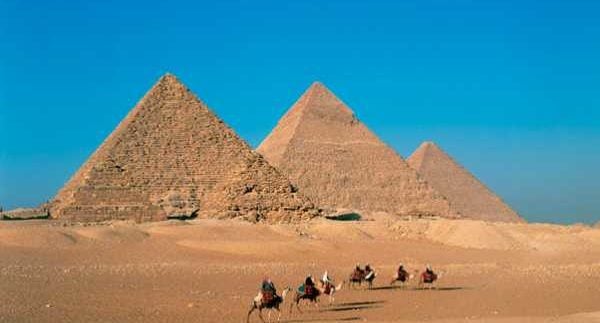
Removed from Unnamed collection
The Great Pyramids of Giza 
There are three major pyramids in the pyramids necropolis in Giza. If you do not fear small spaces, take the opportunity to step inside the small cavity of the Great Pyramid (for a negotiable tip or fee) to experience the pyramid’s rather daunting descending staircase as well as the king’s and queen’s respective burial chambers.
The Great Pyramid of Khufu is believed to have been built over a twenty-year period and completed around the year 2560 B.C. For centuries, the Pyramid held the record as the tallest
man-made structure in the world. Besides the many theories and symbolism that it embodies, the Pyramid is one of the most breathtaking monuments of Ancient Egypt; take a trip to gaze at its peak and see for yourself.
Although not as magnificently large as the Great Pyramid of Khufu, the Pyramid of Khafra has a more complex interior and a large number of statues dedicated to Khafra, son of Khufu,
including the Sphinx.
The smallest of the three, the Pyramid of Menkara rarely gets the same attention as its two larger neighbours; as it lacks the size of Khufu and the Sphinx of Khafra. Menkara’s one advantage may be its material: the two predecessors used limestone, whereas Menkara used the more valuable and pricier granite in his burial chambers. https://www.cairo360.com/article/sights-travel/the-great-pyramids-of-giza-egypts-seventh-wonder-of-the-ancient-world/
Map
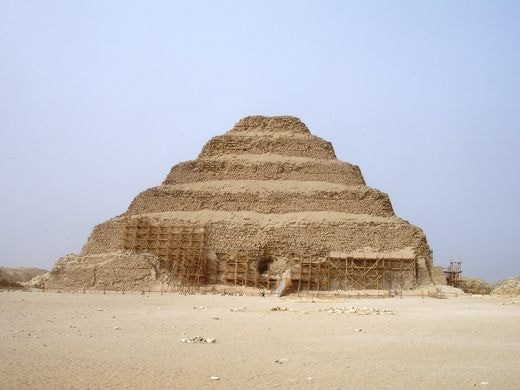
Removed from Unnamed collection
Pyramid of Djoser 
Built as a tomb for the pharaoh Djoser (or Zoser), the Djoser Pyramid was constructed between 2630 BC and 2611 BC in Saqqara, Egypt. Although it is considered the world’s oldest intact large-scale stone monument, the ancient structure is often overshadowed by Egypt’s most famous pyramids.
The Djoser Pyramid stands 197 feet high and was built using 11.6 million cubic feet of stone and clay. Imhotep—a doctor, priest, and sculptor, among other titles and talents—is widely attributed as the pyramid’s architect. Initially, the structure was designed as a traditional, flat-roofed tomb called a mastaba, but Djoser wanted something bigger, something grander.
The pyramid was part of a larger 40-acre complex containing a courtyard, temples, and chapels, all enclosed inside a 30-foot wall. The entrance to the complex, as well as 13 fake doors, is built into the wall. The complex also includes a number of building facades, all of which served ritual purposes.
The pharaoh’s burial chambers are located deep within the pyramid, along with those of his 11 daughters. The burial chamber is part of the pyramid’s winding, maze-like series of tunnels, which researchers think may have been designed to prevent theft (although the pyramid was eventually looted). https://www.atlasobscura.com/places/pyramid-of-djoser
Map

Removed from Unnamed collection
Alexandria National Museum 
Located close to the center of the city, the Alexandria National Museum nicely sums up the history of Alexandria in the three floors of the now renovated Italianate style Al-Saad Bassili Pasha Palace. http://www.egypt.travel/attractions/alexandria-national-museum/
Map

Removed from Unnamed collection
Anfushi Fish Market 
In a coastal city like Alexandria, serving as the largest seaport in Egypt, it is only normal to expect to find a bustling fish market. http://www.egypt.travel/attractions/anfushi-fish-market/
Map
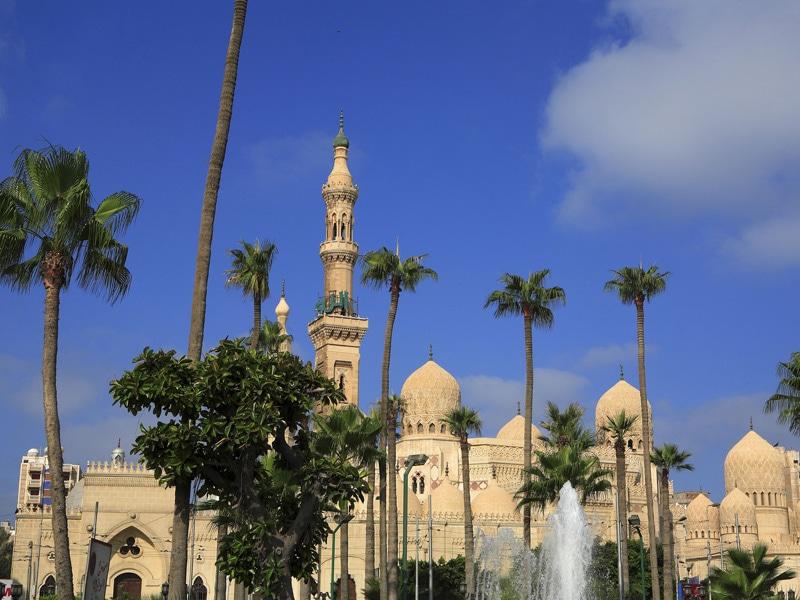
Removed from Unnamed collection
Abu Al-Abbas Al-Mursi Mosque 
Abu Al-Abbas Al-Mursi is Alexandria’s largest mosque; with a cream coloured facade, four great domes, arabesque designs and a high minaret, the mosque is a beautiful sight. http://www.egypt.travel/attractions/abu-al-abbas-al-mursi-mosque-3/
Map
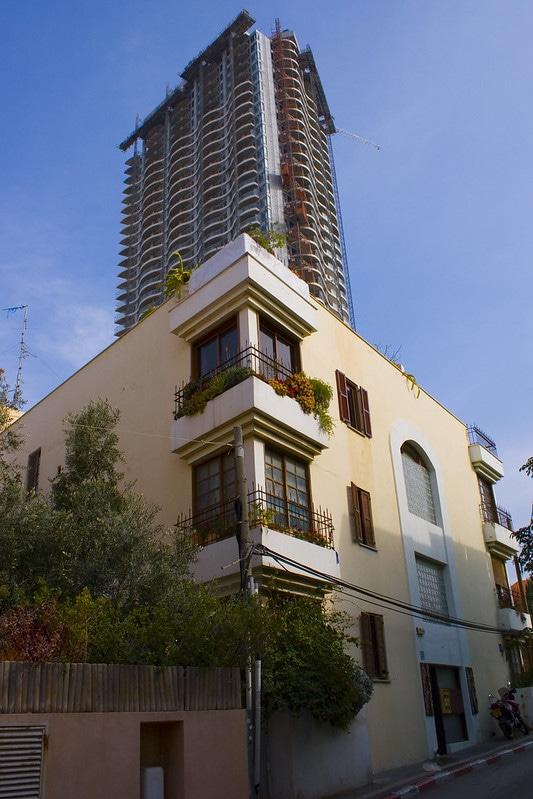
Removed from Unnamed collection
Neve Tzedek 
Neve Tzedek may well be one of Tel Aviv’s oldest districts, but it’s still young at heart! Newe Tzedek or Neve Tsedek, as it is also known is another district of Tel Aviv which has become increasingly fashionable in recent years, as restoration works have taken place to restore it to its former glory. Built in 1887, Neve Tzedek was the first Jewish neighbourhood outside of the old port city of Jaffa, built as a suburb. Its Oriental architectural style, combined with quaint, narrow streets with boutiques, make Neve Tzedek, which means Oasis of Justice, quite literally an oasis in the modern city.
Neve Tzedek is today a real oasis in the bustling city of Tel Aviv. The magnificent buildings are all individual, and a relaxing stroll through the neighbourhood is a great way to spend some time. Shabazi Street is the main street through Neve Tzedek and, like many of the smaller side passages is lined with boutiques, galleries, and craft shops. The Suzanne Dellal Center is Tel Aviv’s dance centre with a superb piazza and interesting gardens, whilst popular cafe Suzanna shouldn’t be missed. https://www.touristisrael.com/neve-tzedek-tel-aviv/354/
Map

Removed from Unnamed collection
Tayelet Of Tel Aviv 
Tayelet is the Hebrew word for promenade. In Tel Aviv, this refers to the pedestrian promenade running the length of the city’s beaches from the Tel Aviv Port in the North through to Jaffa in the South. Beyond the city’s borders, the promenade also reaches North to Herzliya and to Jaffa’s southern neighbor of Bat Yam.
The Tel Aviv Tayelet is bordered on one side by the Mediterranean Coast. In many areas, sandy beaches filled with sunbathers, volleyball nets, paddle ball games (matkot) and cafes accompany the sparkling blue waters. The Jaffa section is comprised of Charles Kalore Park, featuring grass, playgrounds and rocky breakers for breathtaking views. The Tel Aviv Port offers boardwalks, restaurants and a variety of entertainment options and special events.
The main stretch of the Tel Aviv Tayelet is surrounded by large hotels and activities suited to a beach-filled afternoon. Everything from top-quality fish restaurants and steakhouses to McDonald's and Kentucky Fried Chicken can be found along the Tayelet. At night, there is a bar option suited to every taste; beach-side venues filled with couches for relaxation, dance bars, live music and rooftop lounges are open every night of the week. The Tayelet is also home to Tel Aviv’s Tourist Information Center, many health and beauty spas, ice cream shops, and schools for surfing and sailing. It is also a popular place for jogging and biking. http://www.bookingisrael.com/israel-attractions/tel-aviv-tayelet
Map
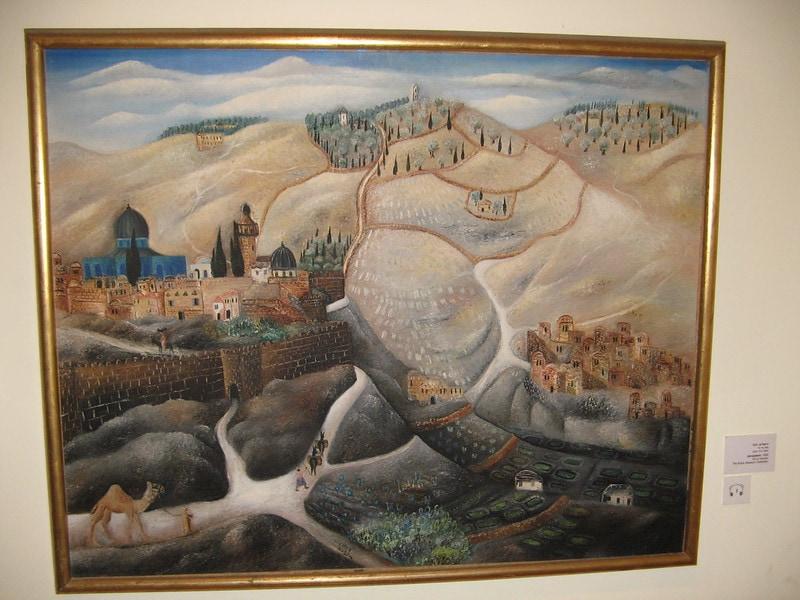
Removed from Unnamed collection
Rubin Museum 
The Rubin Museum in Tel Aviv is located in the center of the city, in what once served as home and studio of world-renowned painter, Reuven Rubin. Reuven Rubin was the first Israeli painter to receive international acknowledgement and appreciation.
Born in Romania, Rubin moved to Israel in 1912 to study painting at Jerusalem’s Bezalel Academy of Art. He continued his studies in Paris before setting up his studio and officially immigrating to Israel in 1923. Over the course of his career, Rubin was named Chairman of the Association of Painters and Sculptors of Palestine, received the Dizengoff Prize and, in 1973 was awarded the Israel Prize for lifetime achievement in art. Rubin died in 1974, leaving his home and studio to his beloved city of Tel Aviv.
On display at the museum are close to fifty of Rubin’s paintings created throughout his career in Israel. The museum features multimedia presentations about the artist’s life and work. The Rubin Museum in Tel Aviv also features paintings by contemporary Israeli artists, a shop with reproductions of the artist’s work, and a tour of Rubin’s studio. http://www.bookingisrael.com/israel-attractions/rubin-museum
Map

Removed from Unnamed collection
Gordon Beach 
Centrally located at the corner of Gordon Street and HaYarkon Street, the Gordon Beach is one of the busiest and most popular of Tel Aviv’s Mediterranean-side beaches. Gordon Beach is within walking distance from many of Tel Aviv’s most exclusive hotels, including the Renaissance Hotel, Carlton Hotel, Hilton Hotel, Sheraton Hotel and Crowne Plaza Hotel and is directly accessible from many of these hotels.
On Gordon Beach, visitors will find soft sands, sparkling blue waters and a mix of tourists and locals. The beach features volleyball courts which are constantly filled with enthusiasts and local leagues. Paddleball players focused on 'matkot', Israel’s popular version of the beach sport, play up and down the Mediterranean shore. A variety of coffee shops, ice cream stores, restaurants and bars are situated on the beach, adjacent pedestrian promenade and nearby Atarim Square. The Tel Aviv Marina, offering water sports and professional instruction, is next to Gordon Beach, as is the newly-renovated, saltwater-filled Gordon Swimming Pool. On Friday and Saturday afternoons, locals flock to Gordon Beach to participate in traditional Israeli folk dancing taught on the promenade.
A lifeguard station is on duty during the summer season from the morning until 7pm. Yoga and pilates classes are taught on Gordon Beach during the summer; class hours are on display at the beach. Parking, public showers and changing rooms are all available nearby. http://www.bookingisrael.com/israel-attractions/gordon-beach
Map
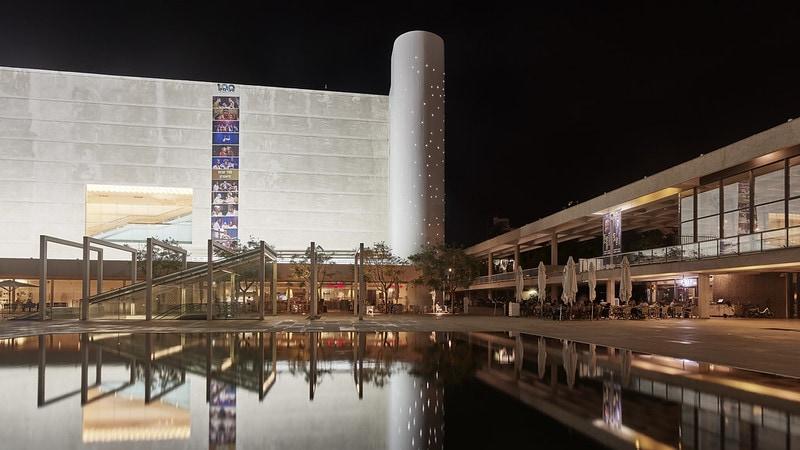
Removed from Unnamed collection
Habima Theater 
The Habima Theater has been Israel’s National Theater since 1935. It was originally the conception of organizers Hannah Rubina and Aaron Baskin, who brought with them from Moscow to Tel Aviv the idea of promoting a unique Hebrew-language theatre and local actors.
In keeping with its original purpose, the Habima Theater hosts live theatre, unique events and seminars.
Plays chosen at the Habima Theater most often deal with issues important to the State of Israel and its diverse mixture of population. Recurring themes include tensions between Arab and Jewish Israelis, religious and secular Jews, new immigrants and native-born Israelis, and Holocaust memoirs, government corruption or the issue of foreign workers.
In order to reach out to all audiences, the Habima Theater also features classic international plays and organizes acting workshops and activities for Israeli youth. Simultaneous translation is available for most live performances. Additionally, the Habima Theater is a member of the Union of the Theatres of Europe and is often invited to join in world tours as a result of this prestigious membership.
The original Habima Theater building, which is located at the end of Rothschild Boulevard, has been renovated and was recently inaugurated in the art complex next to the Helena Rubinstein Pavilion for Contemporary Art and the Mann Auditorium, home of the Israeli Philharmonic Orchestra. http://www.bookingisrael.com/israel-attractions/habima-theater
Map
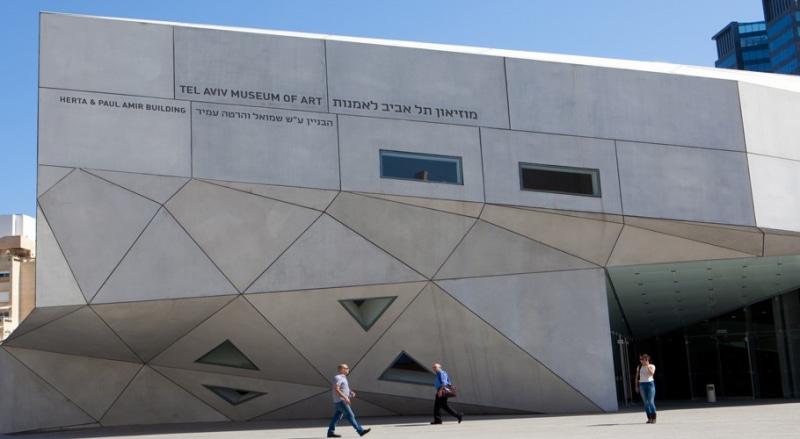
Removed from Unnamed collection
Tel-Aviv Museum of Art 
The Tel Aviv Museum of Art houses one of the world’s largest collections of Israeli art. The collection represents the work of some of the leading Jewish artists of the first half of the 20th century and many of the major movements of modern art of this time.
The modern and contemporary art museum is a part of the Golda Meir Cultural and Art Center complex, also featuring the Israeli Opera and Cameri Theater. The permanent and temporary exhibitions shown at the Tel Aviv Museum of Art display work by Israeli artists, as well as many infamous international painters. The museum is also home to an art library and archive serving art students and professionals throughout Israel. The Joseph and Rebecca Meyerhoff Art Education Center provides classes in a variety of fields to adults and children. The Helena Rubinstein Pavilion for Contemporary Art offers a space to showcase young Israeli talent. The Herta and Paul Amir Building houses an Israeli Architecture Archive and a new section of photography and visual arts.
Over 500,000 guests visit the Tel Aviv Museum of Art each year, to enjoy its wide variety of painting, photography, video, sculpture, as well as to participate in the many events held within the museum building.
The Tel Aviv Museum of Art is open daily from 10 am. The museum closes at 4 pm on Monday, Wednesday and Saturday, 8 pm on Tuesday and Thursday, and 2 pm on Friday. The museum is closed on Sunday. Museum admission is 42 shekels for adult visitors and free for children up to age 18. http://www.bookingisrael.com/israel-attractions/tel-aviv-museum-of-art
Map
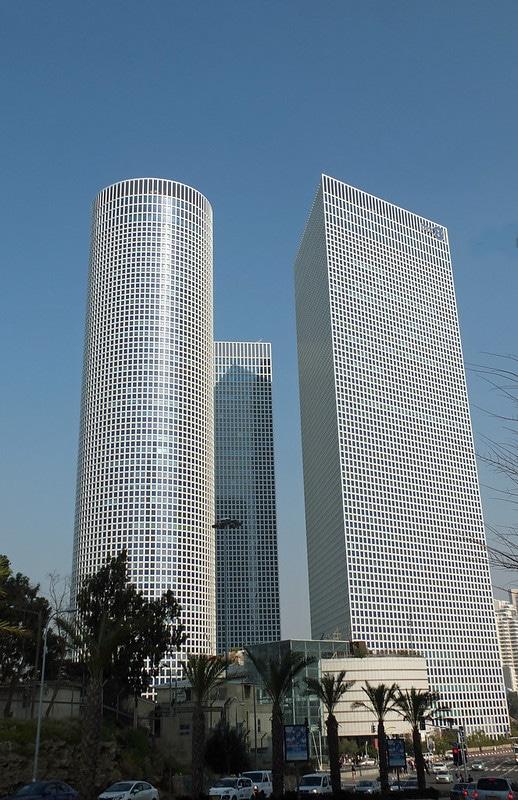
Removed from Unnamed collection
Azrieli Center 
Azrieli Center is a complex comprised of three distinct skyscrapers one circlular, one triangular and one square in the center of Tel Aviv. Named after the founder, Architect David Azrieli.
T he Circular Tower is the second tallest building in Israel. It was completed in 1999 and has 49 floors. The building’s top floor boasts a restaurant, as well as an observation deck with a clear view of the entire city. The Triangular Tower was finished in 1999 and has 46 floors. With 42 floors, including the thirteen-floor Crowne Plaza City Center Hotel, the Square Tower was the last to be completed in 2007. Many of Israel’s most prominent companies are based in or around the Azrieli Center.
At the base of the three office buildings lies one of Israel’s largest shopping malls. The Azrieli Center Mall boasts over 30 fast food and high-quality restaurants and cafes. The shopping opportunities include branches all of Israel’s finest stores, as well as flagship international brand names like H&M, Gap and Mango. The Azrieli Center Mall also houses a fitness center, grocery store, educational learning centers and a rooftop Gymboree.
The Azrieli Center is located on the corner of Begin and Hashalom Streets. It is just a minute from the Hashalom entrance to Ayalon Highway. It is connected by bridge to the Tel Aviv Hashalom Train Station. A bridge in the opposite direction also connects the mall to Hakirya, the Tel Aviv branch of the IDF military intelligence unit. http://www.bookingisrael.com/israel-attractions/azrieli-center
Map
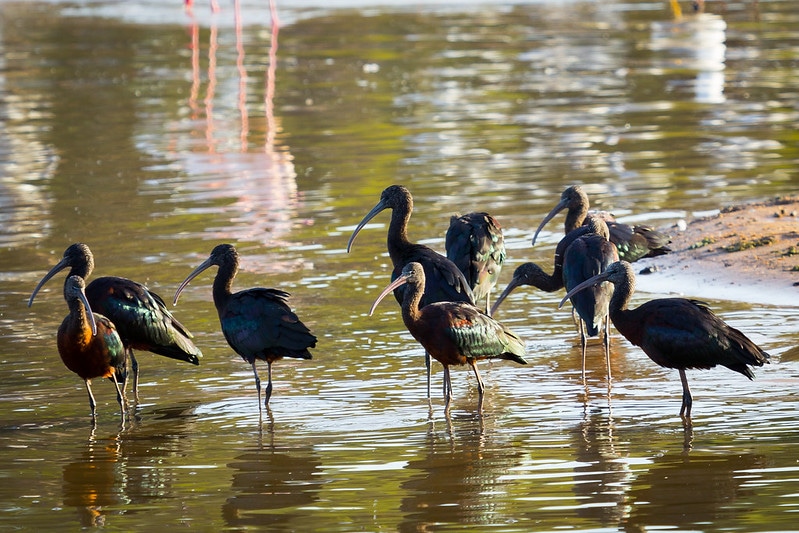
Removed from Unnamed collection
Ramat Gan Safari 
The Zoological Center Tel Aviv – Ramat Gan Safari is a 1000 dunam oasis in the middle of greater Tel Aviv’s highly populated urban metropolis. The Zoological Center Tel Aviv – Ramat Gan Safari contains over 1,600 different animal species, in various habitats created to mimic their natural environments and provide animal education to guests of all ages.
The Zoological Center Tel Aviv – Ramat Gan Safari provides professionally guided educational tours to take families, kindergarten classes, individuals and other groups through the various wildlife departments. Following a walking tour through the zoo area to see reptiles, mammals and birds, take your car through the safari where giraffes, lions and many other wildlife spend their days and nights. Among the guided tours offered at the Zoological Center Tel Aviv – Ramat Gan Safari are a varied menu of unique, specialized tours. These range from the Morning Tour, in which guests accompany Safari employees as they feed the animals and enter the desert like safari area on a tractor, or the adults only Midnight Tour which gives a firsthand view of the “late night activities” of hippos, lions and bears. http://www.bookingisrael.com/israel-attractions/zoological-center-tel-aviv
Map
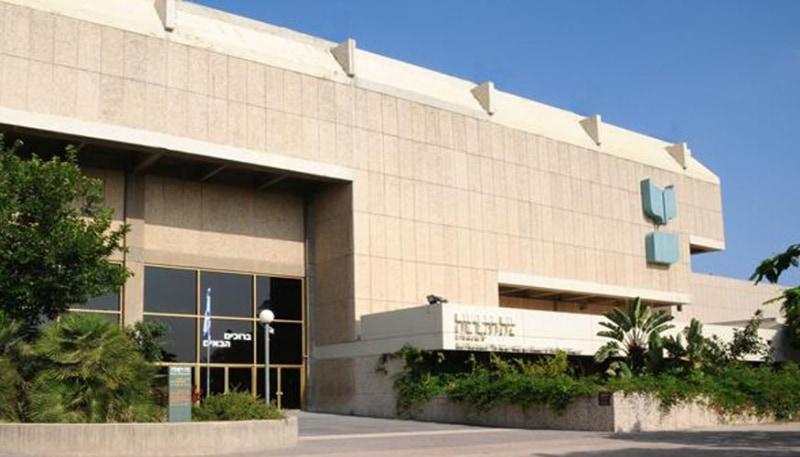
Removed from Unnamed collection
Museum of the Jewish People at Beit Hatfutsot 
Beit Hatfutsot' - The Museum of the Jewish People (The Disapora House), the Nahum Goldmann Museum of the Jewish Diaspora, is located on the campus of Tel Aviv University.
The Museum of the Jewish People tells the story of the Jewish People from its expulsion from the holy land 2,600 years ago to the present day.
The Museum of the Jewish People exhibits the diverse histories of the many Jewish communities around the world. It connects visitors with their roots, offers reproductions of beautifully designed synagogues, pictures depicting the differing religious customs and cultural traditions of various communities, and describes the complex and ongoing journey of the Jewish people “Among the Nations.” http://www.bookingisrael.com/israel-attractions/disapora-museum
Map
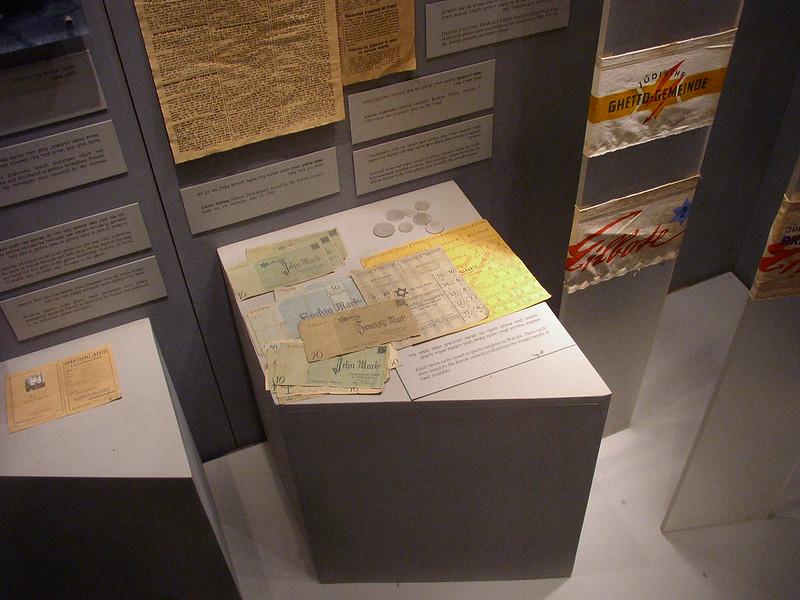
Removed from Unnamed collection
Yad Vashem 
Yad Vashem, Israel’s largest Holocaust memorial is set on the slopes of the Mount of Remembrance on the edge of Jerusalem. The new Yad Vashem Museum opened in 2005 and its nine chilling galleries of interactive historical displays present the Holocaust using a range of multimedia including photographs, films, documents, letters, works of art, and personal items found in the camps and ghettos. Yad Vashem is a place which is not fun to visit, but is definitely somewhere that we recommend all visitors to Israel experience.
The museum leads into the Hall of Names, an eerie space containing over three million names of Holocaust victims that were submitted by their families and relatives. Names can still be submitted by visitors to the memorial and added to the computerized archive, whilst visitors are able to search through the records.
In addition to the Holocaust History Museum, the Yad Vashem campus has a number of other chilling memorials which you can visit. These include the Hall of Remembrance, where the ashes of the dead are buried and an eternal flame burns in commemoration; Yad Layeled, the children’s memorial, which commemorates the one and a half million Jewish children who perished in the Holocaust; and The Memorial to the Deportees, a railroad car hanging over the cliff on the road winding down from the mountain commerorating those who were deported. https://www.touristisrael.com/yad-vashem-holocaust-museum/409/
Map
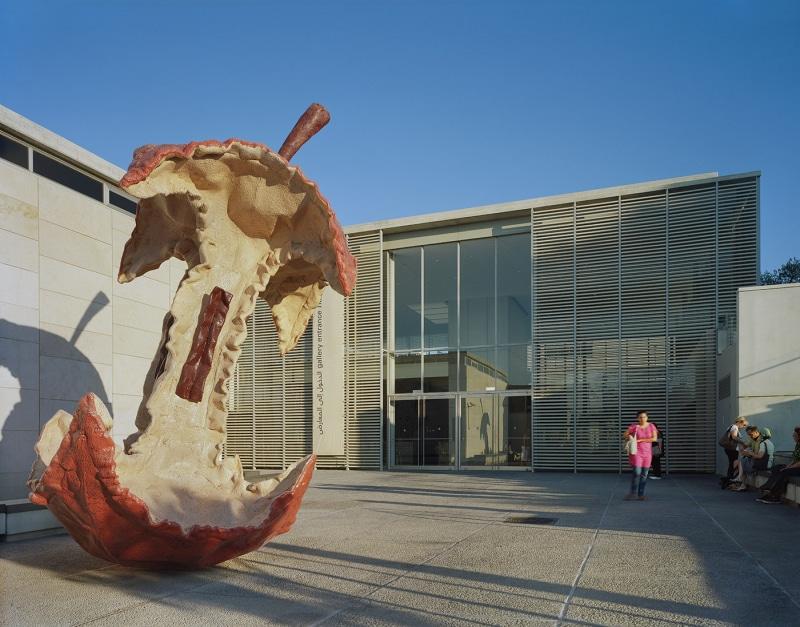
Removed from Unnamed collection
The Israel Museum 
The Israel Museum, Jerusalem is Israel’s largest cultural institution and is ranked among the world’s leading art and archeology museums. Founded in 1965, the Israel Museum, Jerusalem was extensively extended and refurbished reopening in 2010. The focus of the museum is on the art, Judaica and ancient artifacts of the Land of Israel and beyond, featuring the most extensive holdings of Biblical and Holy Land archaeology in the world. The museum has a collection of nearly 500,000 objects, representing a full scope of world material culture.
While there is loads to see at the Israel Museum, Jerusalem, there are a number of stand-out highlights. The Shrine of the Book houses the Dead Sea Scrolls which are some of the oldest Biblical scrolls ever found. Adjacent to this is an amazing model of Second Temple Era Jerusalem which reconstructs the topography and architectural character of the city as it was prior to its destruction by the Romans in 66 CE. https://www.touristisrael.com/the-israel-museum-jerusalem/411/
Map

Removed from Unnamed collection
The Machane Yehuda Market 
The Machane Yehuda Market, or shuk, is the largest market in Jerusalem with over 250 vendors selling everything from fruit and vegetables to specialty foods, and clothing to Judaica.The market is the main traditional marketplace of Jerusalem and is an experience that must be part of any visit to Jerusalem, filled with fascinating sounds, sights, and smells.
The Machane Yehuda Market is set between Aggripas and Jaffa Streets, with two main aisles and then many further small walkways once inside. It is a maze and myriad of sights, sounds, and smells, an intense sensory experience and memorable life experience! Just a ten-minute walk from the center of Jerusalem, the market is a fascinating place to stroll whether you are interested just in observing the magnificent sculpted displays of spices, mouthwatering array of foods, and stunning energy of the place, or if you want to get involved in real-market buying, negotiating and tasting! https://www.touristisrael.com/machane-yehuda-market/3876/
Map
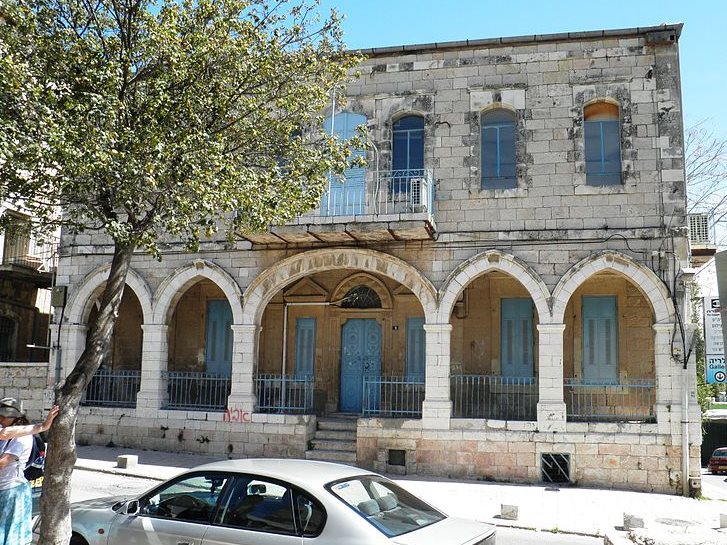
Removed from Unnamed collection
Musrara 
Musrara is a unique neighborhood in Jerusalem, a fascinating microcosm of the city’s history and its various population groups. Walking through the streets, you’ll notice that every house is built differently, and houses have been joined, expanded, cut up and renewed throughout the years of its turbulent history. The municipality has tried to change the name of the neighborhood to Morasha, and you’ll see this name on official maps, but Jerusalem residents proudly continue to use its old name.
In recent years, a number of artists have moved to the neighborhood, and three art schools have opened up: a religious film school called Maaleh; Musrara, an edgy photography, animation and sound school; and the School for Oriental Music, which occasionally has open concerts in the evenings, and is lovely to walk past as the musicians practice during the day. These last two are both on Ayin Het street, and there is another gallery next to them. An artists’ collective called Muslala has sprung up, and they engage in artwork in the public domain, involving longtime local residents and social activists from East and West Jerusalem. https://www.touristisrael.com/musrara-jerusalem/13544/
Map

Removed from Unnamed collection
Ramparts Walk 
The Ramparts Walk in the Old City of Jerusalem is a gem hidden from locals and tourists alike. Hard to find, the Ramparts Walk is one of the most rewarding activities in terms of history, beauty and a greater sense of the Old City as a whole. Reasonably priced, the Ramparts Walk makes a great trip combined with the other activities and sites found in and around the Old City.
The Ramparts Walk is divided into two separate walks, totally just under two miles: the north side walk and the south side walk. Both are included in the admission ticket and both have their differences. The north side walk is the longer of the two and covers a far greater area, from the Jaffa Gate (on the west side of the Old City) to the Lions Gate (on the east side, approaching the Dome of the Rock). The south side walk is shorter but ends at a more convenient location, the Western Wall (or Kotel as it is known in Hebrew). The south side walk begins at the Tower of David (on the west side of the Old City, beside the Jaffa Gate) and continues around to the south side of the city, ending off between the Zion and Dung Gates. https://www.touristisrael.com/ramparts-walk/7767/
Map
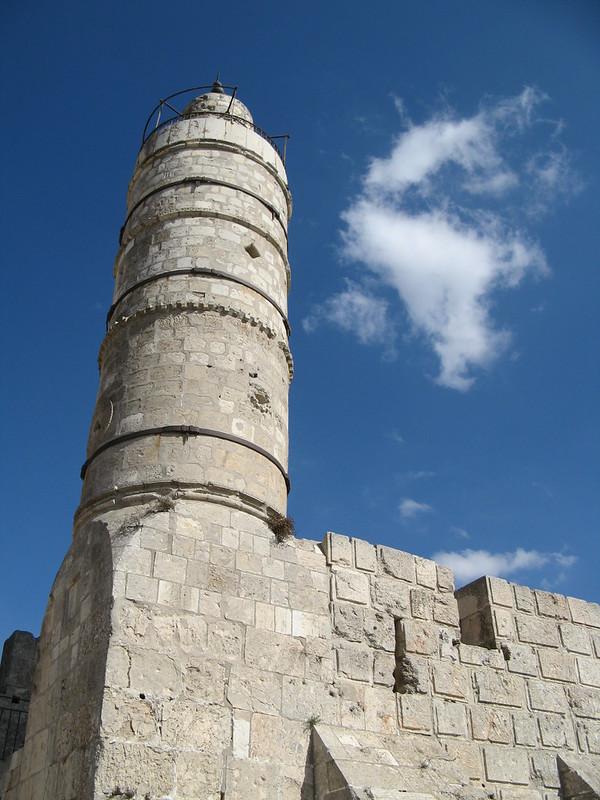
Removed from Unnamed collection
Tower of David Museum 
The Tower of David Museum of the History of Jerusalem is located in the restored ancient Citadel of the Old City near the Jaffa Gate, the historic main entrance to the city. The museum tells the long and fascinating history of Jerusalem starting from the second millennium BCE and ending with the modern city you see today.
The museum’s facade, The Citadel is itself, a fascinating archaeological site, and provides some of the best 360-degree views across the Old City and Modern City available, and comes to life at night with the Tower of David Night Spectacular. As well as its fascinating permanent displays, the museum regularly hosts changing exhibitions as well as lectures, special cultural events and educational programs.
The Tower of David Night Spectacular is an incredible sound and light show, the only one of its kind in the world, in which the walls of The Citadel and Old City are brought to life using amazing audio-visual technologies to provide the story of Jerusalem in a unique experience. https://www.touristisrael.com/tower-of-david-museum/413/
Map
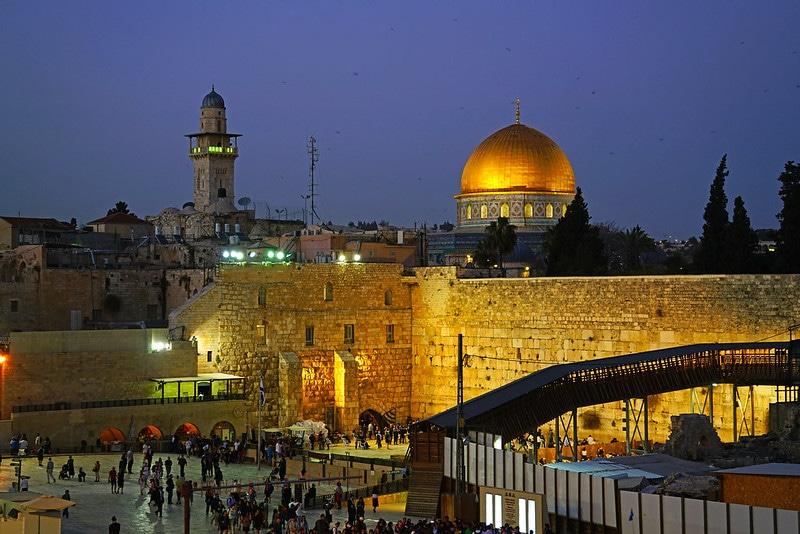
Removed from Unnamed collection
Western Wall 
The Western Wall, or “Wailing Wall”, is the most religious site in the world for the Jewish people. Located in the Old City of Jerusalem, it is the western support wall of the Temple Mount. Thousands of people journey to the wall every year to visit and recite prayers. These prayers are either spoken or written down and placed in the cracks of the wall. The wall is divided into two sections, one area for males and the other for females. It is one of the major highlights in any tour of the Old City.
The site is open to all people and is the location of various ceremonies, such as military inductions and bar mitzvahs. The Western Wall is free and is open all day, year-round. Women and men should be dressed modestly in the Western Wall Plaza. To pray at the wall, women should have their legs and shoulders covered. Men should cover their head. https://www.touristisrael.com/western-wall/15946/
Map
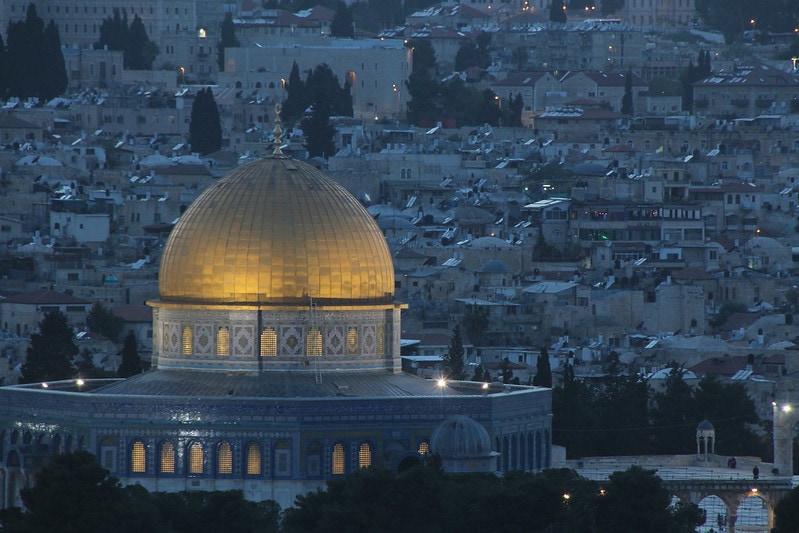
Removed from Unnamed collection
Temple Mount 
The Temple Mount, a massive masonry platform occupying the south-east corner of Jerusalem’s Old City, has hallowed connections for Jews, Christians and Muslims.
All three of these Abrahamic faiths regard it as the location of Mount Moriah, where Abraham prepared to offer his son Isaac (or Ishmael in the Muslim tradition) to God.
For Jews, it is where their Temple once stood, housing the Ark of the Covenant. Now, for fear of stepping on the site of the Holy of Holies, orthodox Jews do not ascend to the Temple Mount. Instead, they worship at its Western Wall while they hope for a rebuilt Temple to rise with the coming of their long-awaited Messiah.
For Christians, the Temple featured prominently in the life of Jesus. Here he was presented as a baby. Here as a 12-year-old he was found among the teachers after the annual Passover pilgrimage.
For Muslims, the Temple Mount is al-Haram al-Sharif (the Noble Sanctuary). It is Islam’s third holiest site, after Mecca and Medina, and the whole area is regarded as a mosque. https://www.seetheholyland.net/temple-mount/
Map
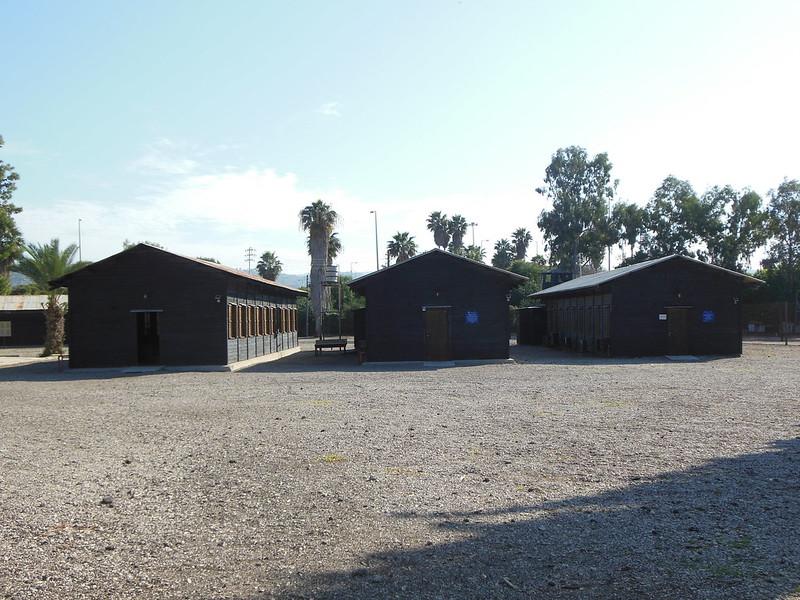
Removed from Unnamed collection
Atlit Detainee Camp 
The Atlit Detainee Camp Museum is located in Atlit, a small town located on the northern coast about 20 kilometers south of Haifa. In the 1930s and 40s, this site served as a detention center for illegal Jewish immigrants seeking refuge in Palestine (which is now the State of Israel). The land was under British Mandate and officials let very few Jewish people into the country legally. Tens of thousands of Jewish people were interned here during this time period. Although first-time visitors may not be familiar with this museum, it is very significant site in the history of Israel.
Illegal immigrants are known as “ma’apilim”. Before and during World War II, thousands of Jewish people were fleeing their homes trying to escape persecution and concentration camps. Many coming from Europe and northern Africa chose to seek refuge in Palestine, which was under British Mandate. More than 122,000 people came to Israel despite the blockade. https://www.touristisrael.com/atlit-detainee-camp-museum/16177/
Map
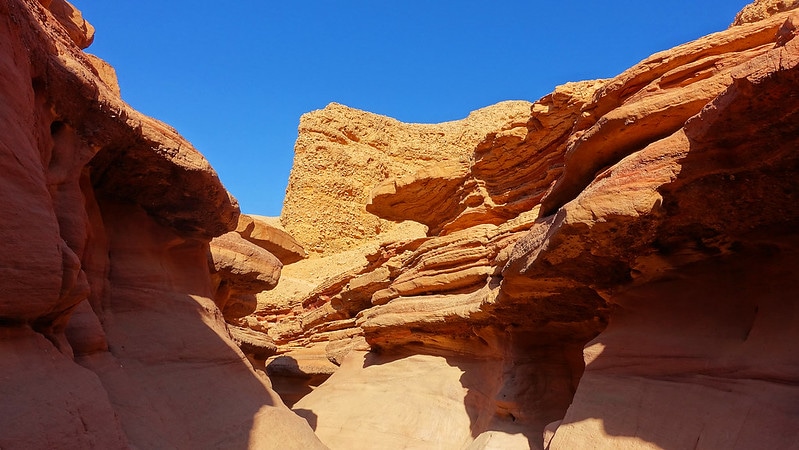
Removed from Unnamed collection
Red Canyon 
The Red Canyon in the Eilat Mountains is one of Israel’s most beautiful yet accessible hiking trails. Twenty minutes north of Eilat, the Red Canyon offers an undisturbed hike through the natural canyons. The Red Canyon gets its name from the phenomenon which occurs when sunlight hits the reddish rock that lines the canyon, giving it an intense reddish color. The rock is varied in color and in patches is shades of white and yellow.
The green trail at the Red Canyon is considered to be family friendly, well marked, and relatively short. The descent leads down into the river bed and there is then a short fun trail leading to the second creek. The black trail is a more challenging descent down into the second creek. Walking through the second creek, you will reach a large rock which projects from the river bed. From atop this rock there is one of the most perfect photo spots in the area. As you continue to walk along the second creek, the sides of the canyon will narrow into what is known as the ‘Red Canyon’. The trail takes around 75 minutes to complete. https://www.touristisrael.com/red-canyon-eilat/19958/
Map

Removed from Unnamed collection
Haifa Educational Zoo 
The Haifa Educational Zoo is an ideal place for families to visit while in Haifa. Originally built in 1949 by Pinchas Cohen as an education center for a neighboring school. After renovations in 2002 the zoo now hosts more than 100 species of wildlife, including mammals, birds, reptiles, amphibians and plantlife. Built on a beautiful nature reserve on Mount Carmel with views of the Mediterranean Sea, the zoo covers 35 dunams (8.6 acres) making it perfect for everyone, especially families with small children.
Some of the zoo’s mammal features include; Lemurs, brown capuchin monkeys, meerkats, Bengal tigers, leopards, alpaca, honey badgers, lions, Syrian brown bears, baboons, and caracals. The zoo also has a special climate-controlled reptile house containing pythons, vipers, cobras, anacondas, racers, boas and various lizards. Birdlife in the zoo ranges from the nocturnal owls to the free- roaming peacocks which swarm the entrance to the path. Many of the zoo’s animals are natives of Israel including the Israeli wolf (also known as the Arabian wolf), ibex, porcupine (an orphan found in the area), camels, wild boars, jackals, foxes, black cobra, Palestinian viper, Griffon vultures and the rare Persian fallow deer who lives almost exclusively in the Upper Galilee on the small nature preserve of Nachal Kziv. https://www.touristisrael.com/haifa-educational-zoo/4871/
Map

Removed from Unnamed collection
Louis Promenade 
One of the loveliest places to walk and see in all of Haifa is the Louis Promenade on Mount Carmel. The promenade is conveniently located minutes away from numerous museums, shops and several hotels such as the Dan Panorama, the Dan Carmel and the Nof Hotel. This pleasantly peaceful promenade etched onto the slope of Haifa’s mountain is perfect for walks, jogs, runs and basking in the warm Mediterranean sun. With an exceptional view that extends from the city of Haifa to the distant white outcropping that is Rosh NaHikra, you can see the coastal cities of Nahariya, Akko (Acre) and the Krayot with the low, green mountains of the Western Galilee.
Watch the cargo ships come into the port and the naval ships dart to and fro with the slight chance of spotting dolphins leaping way down off the bay. On a clear day, the snowy peaks of Israel’s tallest mountain, Mount Hermon at 9,232 feet, can be seen as well. Obviously, telescopes and binoculars are advised and don’t forget your camera! https://www.touristisrael.com/louis-promenade-haifa/4927/
Map



